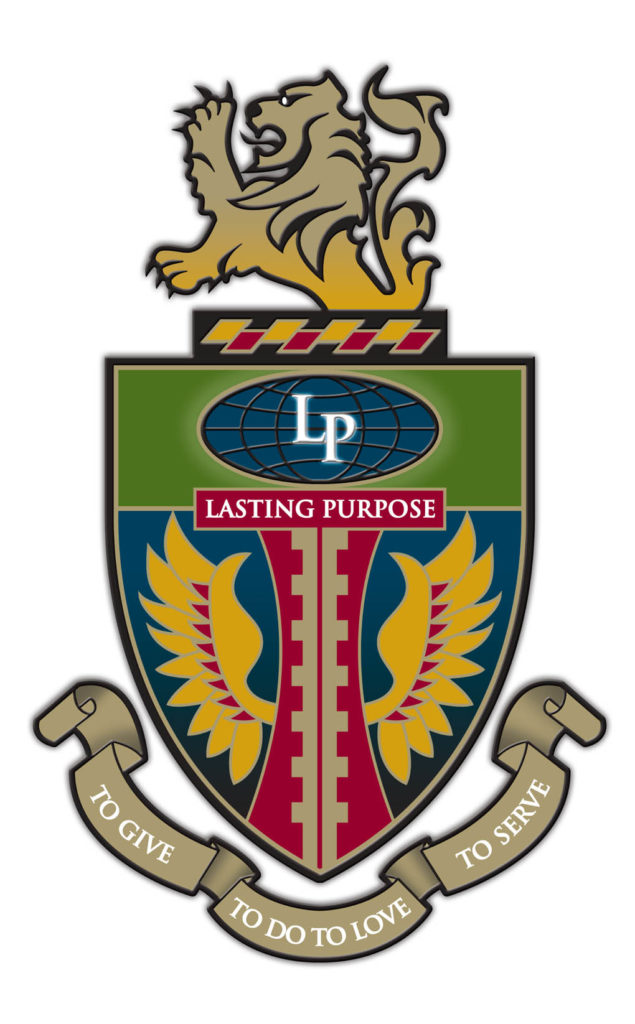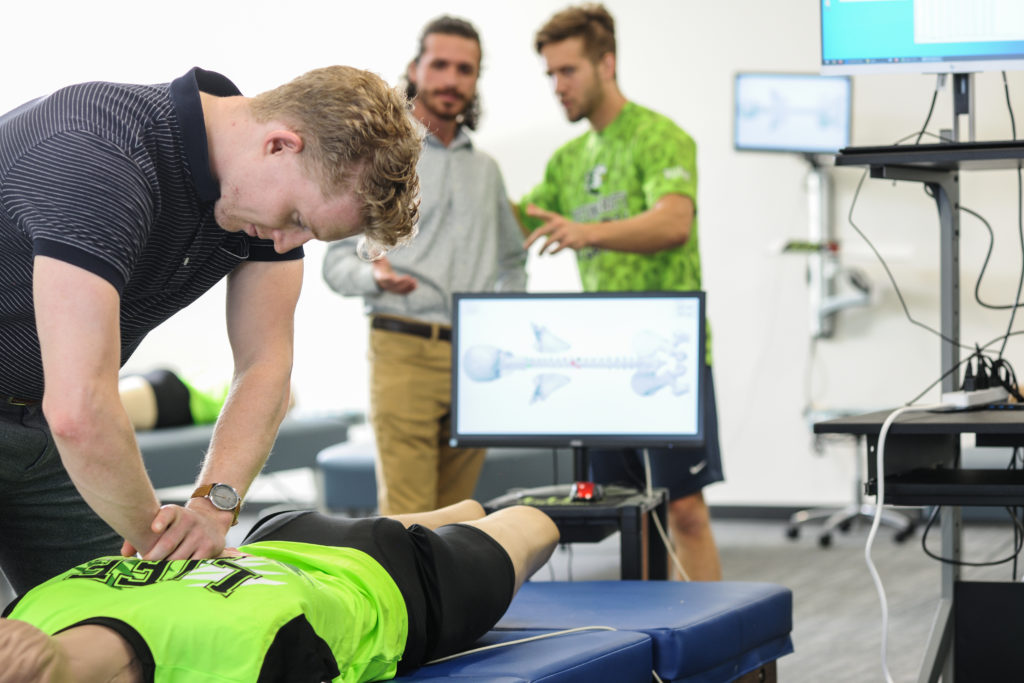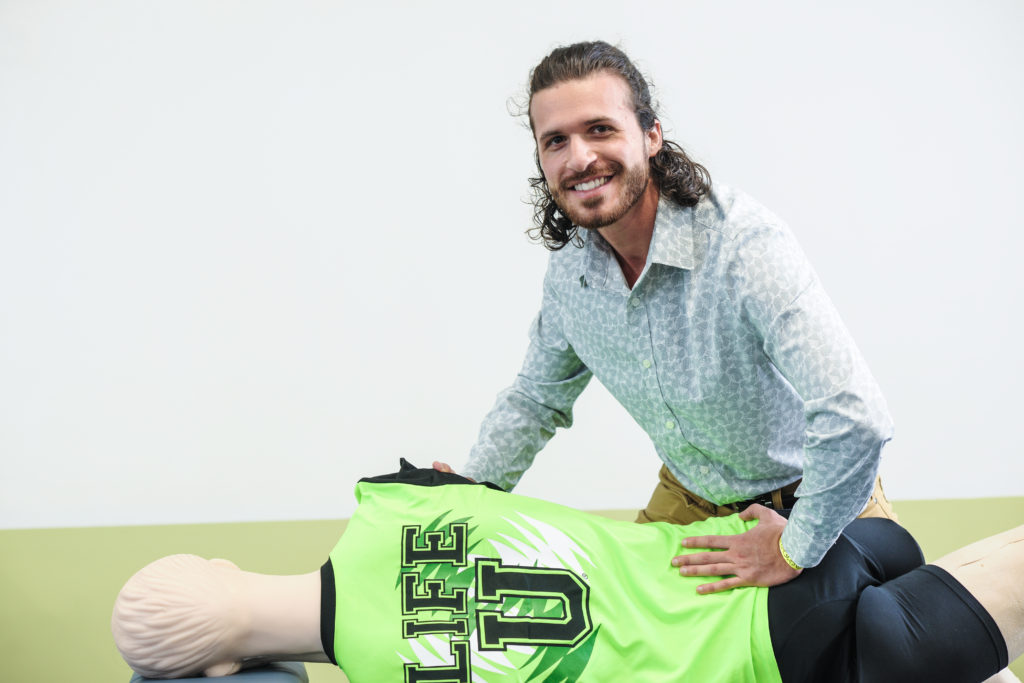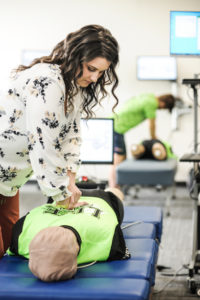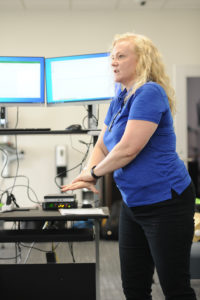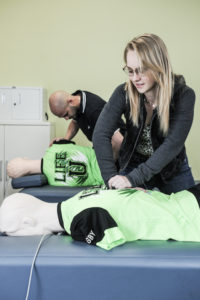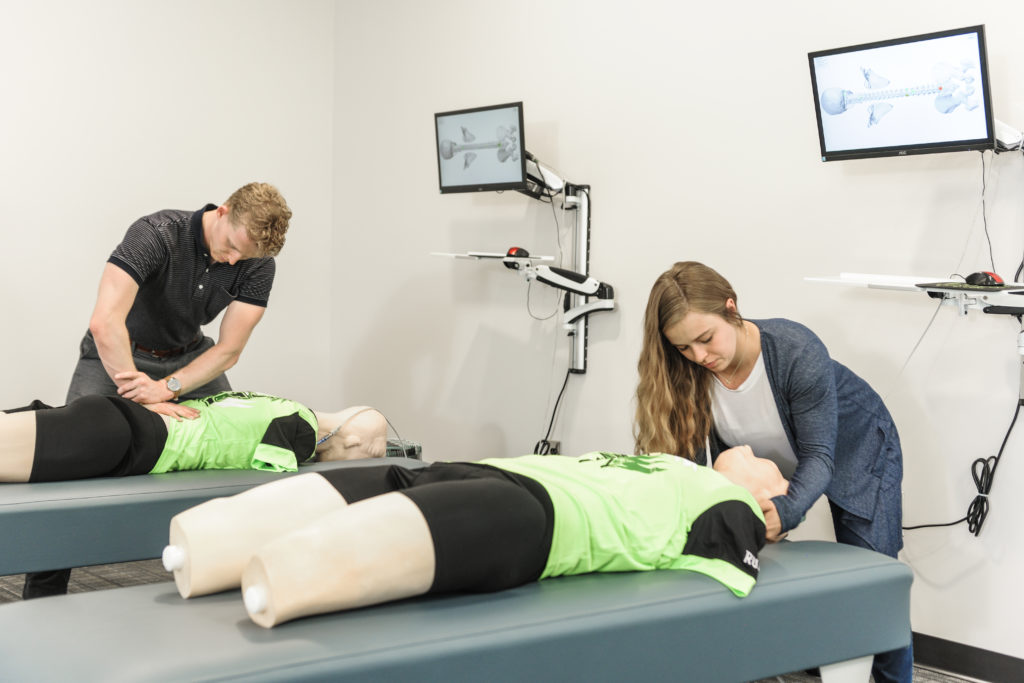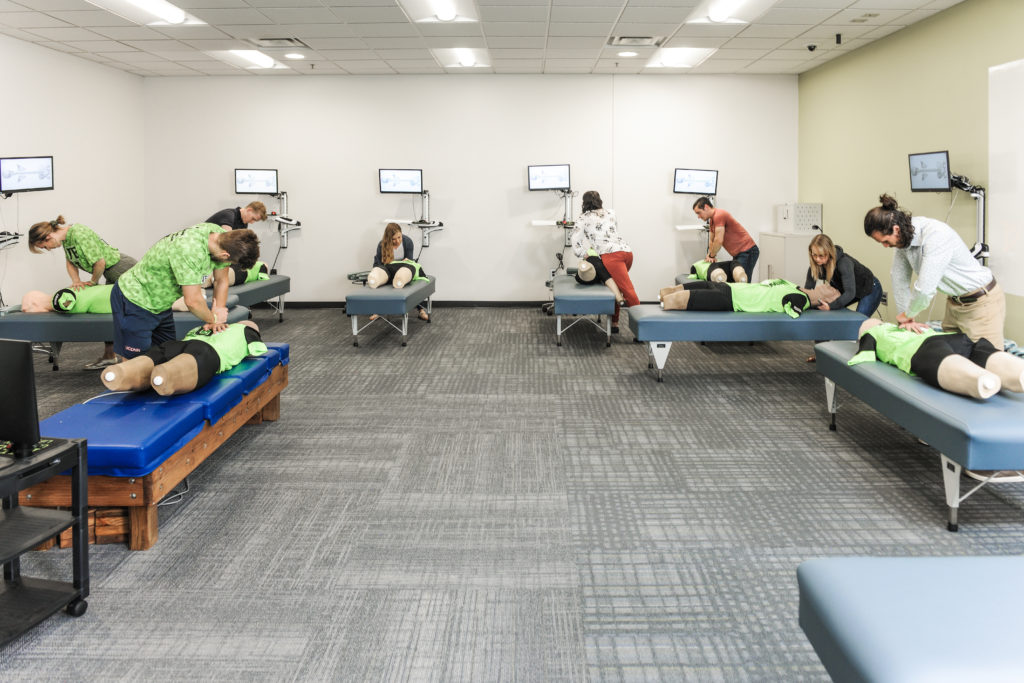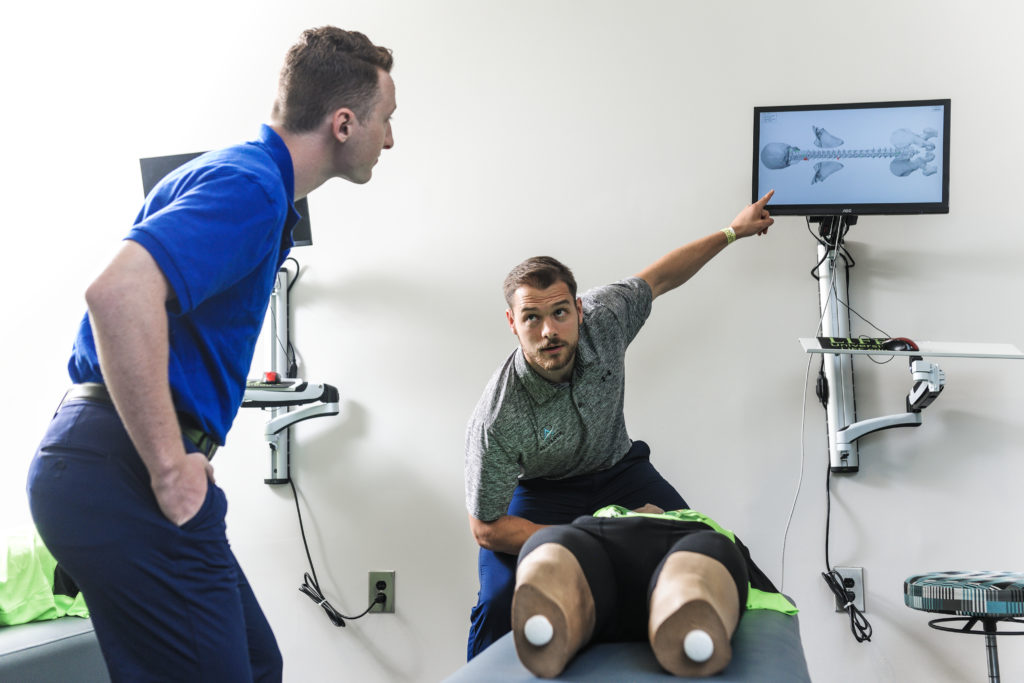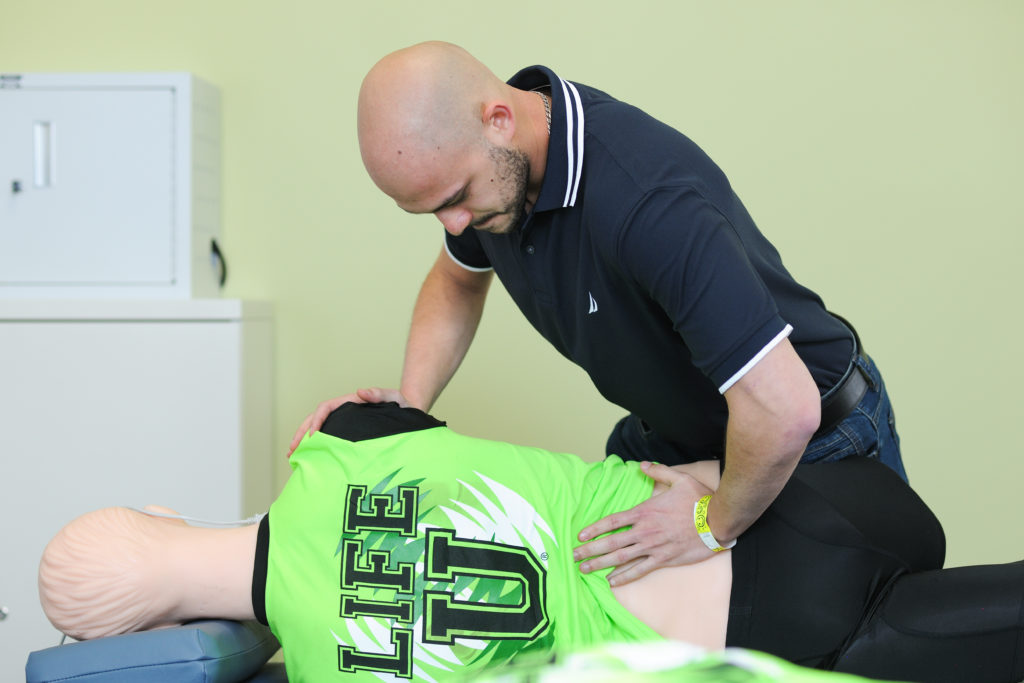Palpation and Adjustment Trainer
Palpation and Adjustment Trainer (PAT)
LIFE UNIVERSITY RESEARCH
Developed by the Life University Dr. Sid E. Williams Center for Chiropractic Research, PAT (Palpation and Adjustment Trainer) allows Life U Doctor of Chiropractic students to learn the biomechanics of chiropractic adjustments and to develop hands-on skills and techniques prior to beginning the clinical phase of their education.
According to Life University President Dr. Rob Scott, PAT is just the latest technological breakthrough the University has developed as it continues in leading the Vital Health Revolution.
“Imagine for a moment a chiropractic technique lab that brought high touch, high tech innovation to our students, a lab that incorporates technology to help our students through tactile training develop the necessary motor skills to deliver a precise chiropractic adjustment,” Dr. Scott described, adding that PAT is used in addition to – not as a replacement for – adjusting actual patients.
The most advanced palpation and adjusting technology in the Chiropractic profession, PAT is an anatomically accurate, technology-based mannequin with the look, feel, size and weight of an average person. The mannequin features a 3D-printed or molded spine, pelvis and occiput surrounded by viscoelastic skin and soft tissue, simulating the actual experience of adjusting a human patient.
PAT contains 64 embedded pressure sensors at key spinal landmarks from the skull (EOP) to the pelvis and sacrum, helping students learn how to locate vertebral landmarks by palpation, find restricted motion and perform adjustments with controlled amounts of force and speed, along a specific vector.
Along with the force plate technology, PAT gives students immediate, objective feedback about the “where, how hard, how fast and in which direction” part of adjusting, allowing them to develop these important skills necessary for patient care. Computer software monitors pressure levels at each sensor and shows the location of contact, with labels that can be turned on or off.
